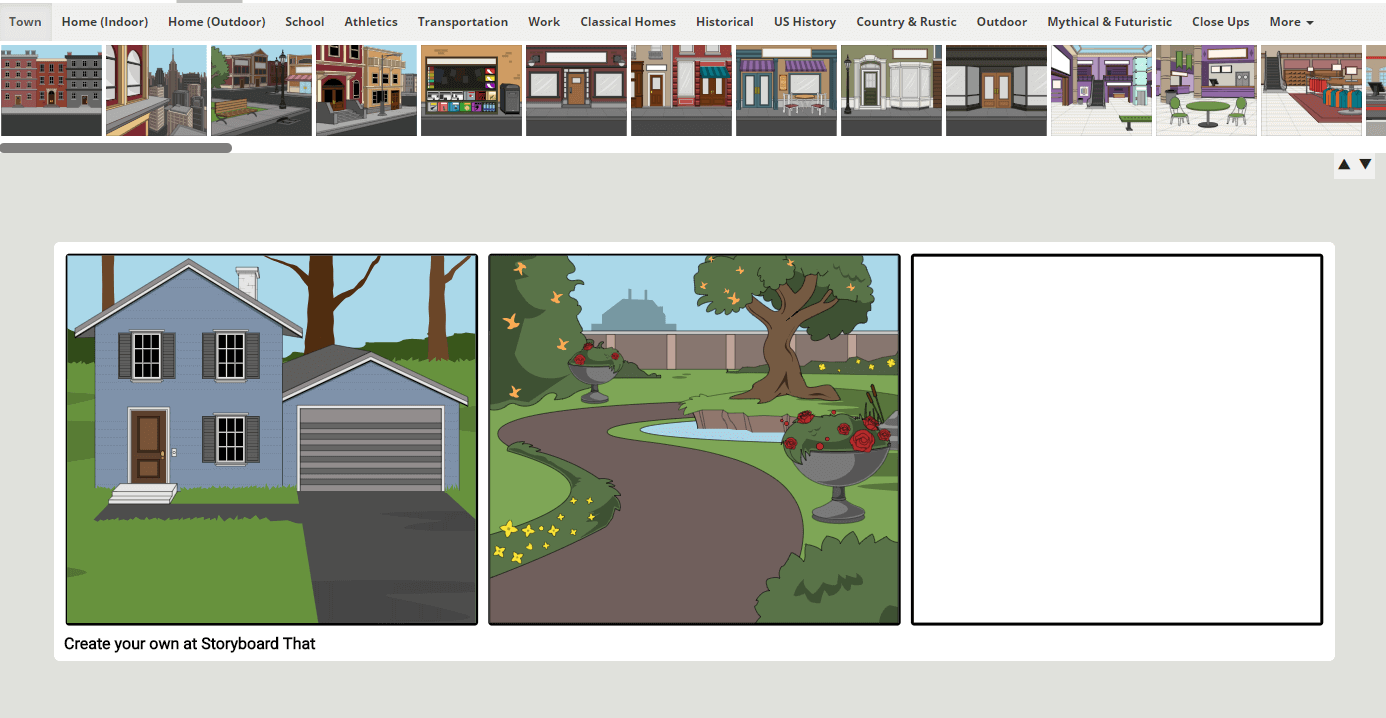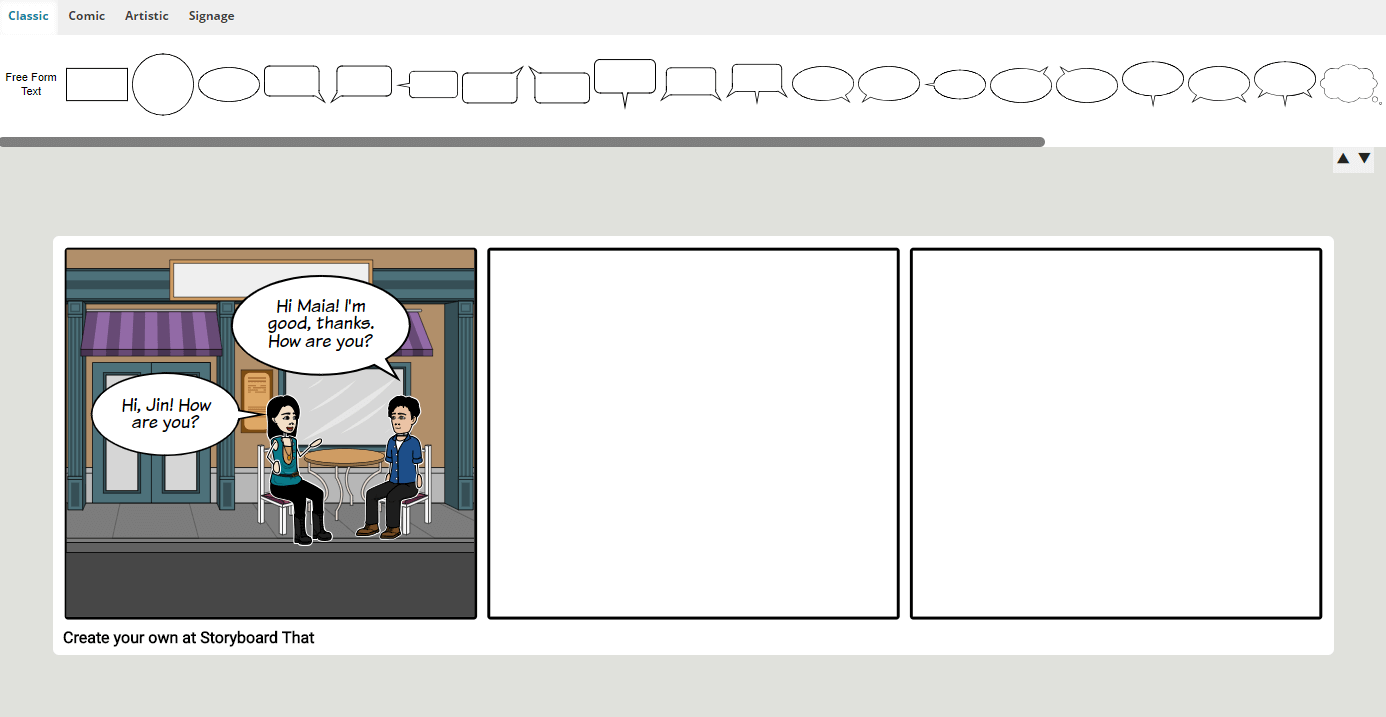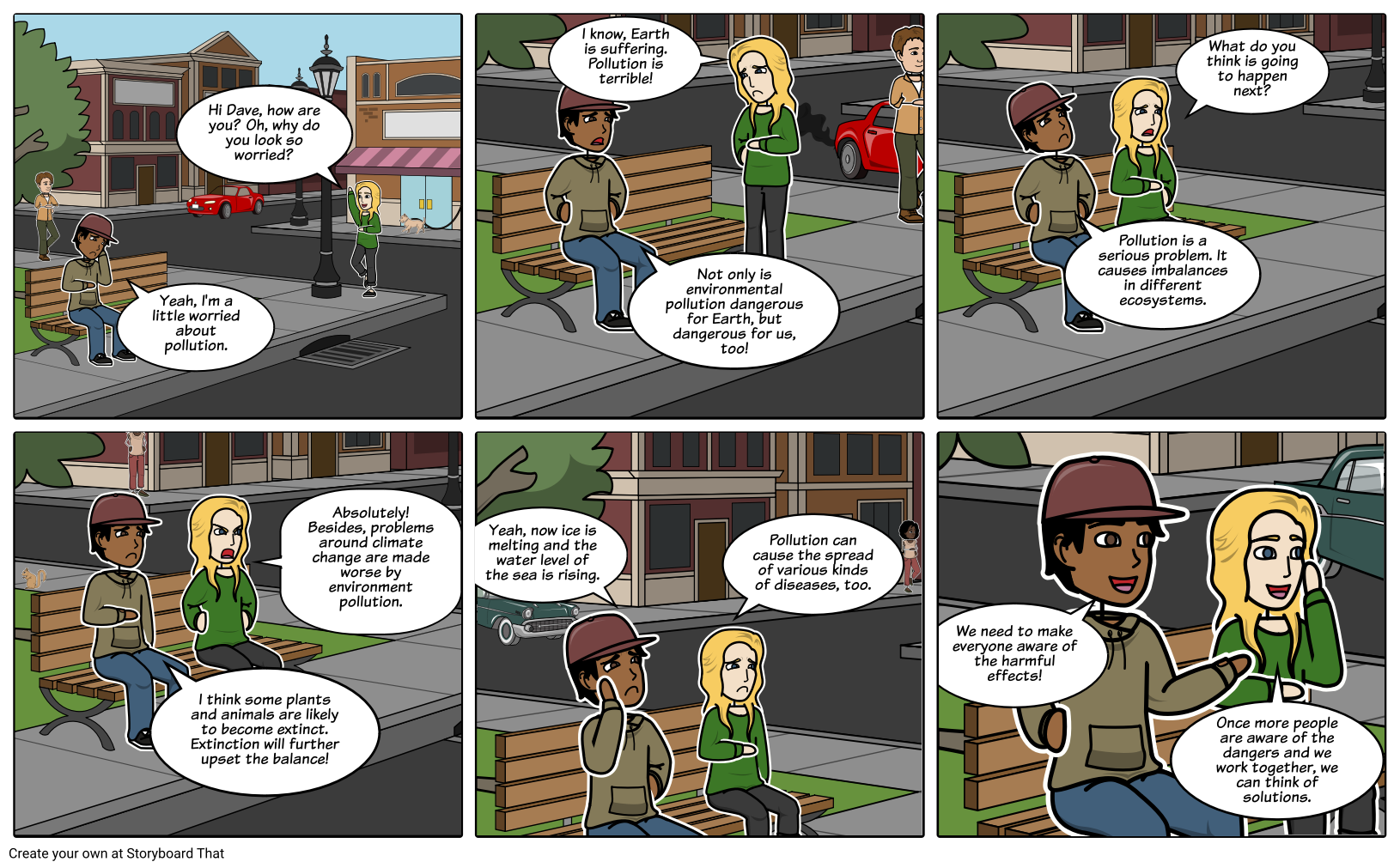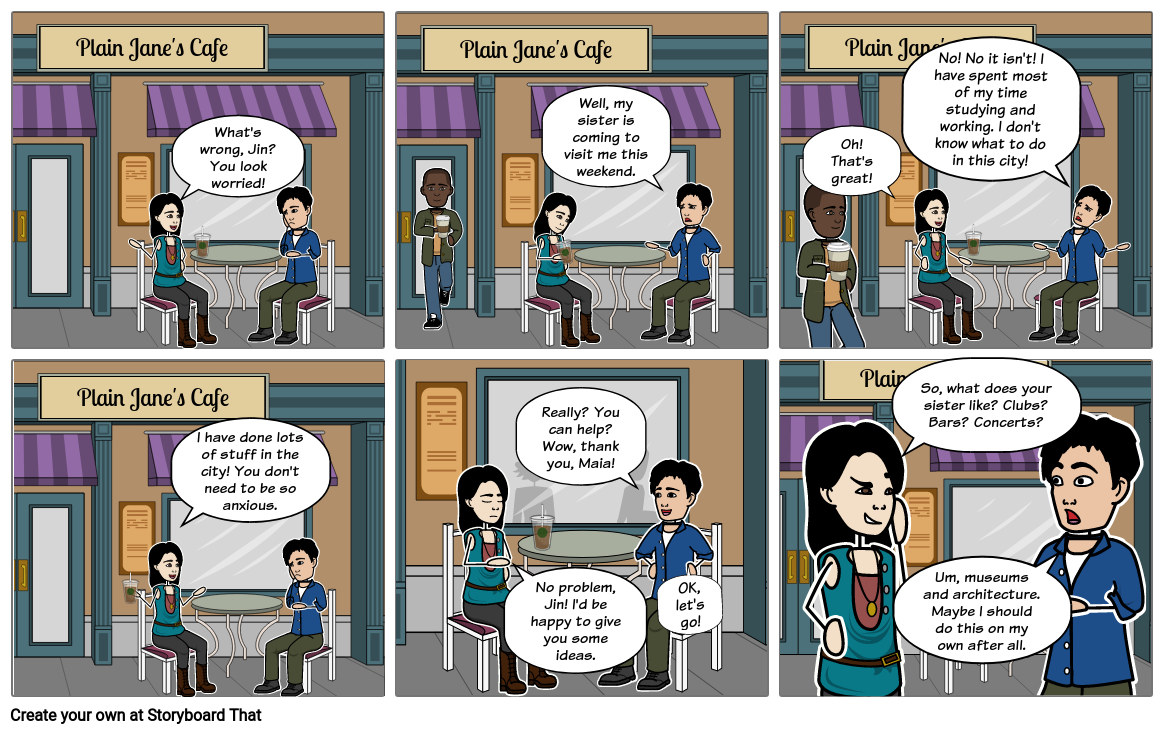How to Write Dialogue Between Two Characters
Conversational English can be very difficult. While knowing proper sentence structure and correct grammar is extremely important, conversational English is how you will interact with other English speakers on a daily basis. If you don’t feel ready to hold a conversation in English, or if you want more practice, write your own dialogue!
Imagining an example of a conversation between two characters can be challenging without providing context or prompts. Conversational English is very different from English you would use for a written assignment, or from English you would read in a book or on a news website. However, you normally go through the same motions when completing a written assignment that involves answering an essay question, and a written assignment that asks you to come up with a natural sounding conversation between two characters. Therefore, learning to write dialogues is a fundamental skill in language education. With guidance, advice, and lessons, students can be empowered to master the art of writing dialogues and become confident communicators in real-life situations.
The following guide provides a step-by-step approach to writing engaging dialogues between two characters, incorporating common phrases, examples, and techniques to create authentic and meaningful conversations.
- Establish the Characters: When writing your dialogue, it's good to start with a simple conversation between two friends and then add other conversational participants as it progresses. Introduce the two friends and provide a brief description of their relationship and background.
- Set the Scene: Describe the location and the context of the conversation between the two friends.
- Initiate the Dialogue: Begin the conversation with a friendly greeting or an opening question.
- Use Common Phrases and Expressions: Incorporate everyday language and expressions that friends might use when conversing.
- Include Examples of Dialogue Between Two Characters: Provide specific examples of their conversation, showcasing their interaction and the topics they discuss.
- Include a Misunderstanding: Introduce a moment of confusion or miscommunication between the friends.
- Write a Short and Engaging Dialogue: Keep the talking concise and engaging, capturing the essence of a conversation between two people. Make sure it flows naturally and maintains a conversational tone.
- Wrap Up the Conversation: Conclude the discussion with a closing remark or a future plan.
Remember to tailor your activity to the desired language proficiency level and ensure it aligns with the intended purpose of the conversation between the two friends.
Exploring the Use of Conversation Starters and Enders
Conversation starters and enders are vital tools that help set the tone and direction of a discussion between two characters. They serve as entry points into a rich exchange of thoughts and ideas. For example, a simple conversation between teacher and student in English, the teacher may be initiated with an open-ended question like, 'Tell me about something interesting you learned today.' This prompts the student to share their thoughts and encourages active participation. Likewise, in a conversation between two new friends, the use of warm greetings and introductory phrases like 'It's great to meet you!' or 'How has your day been so far?' fosters a welcoming atmosphere, fostering connection and sparking further conversation. However, misunderstandings can occur, leading to confusion or misinterpretation. In such instances, employing question tags becomes essential to seek clarification and resolve any potential ambiguity. For instance, you can write a conversation between two friends using question tags, for example, 'You're still up for the movie tonight, aren't you?' helps ensure mutual understanding and prevent any miscommunication. Overall, by incorporating common phrases, and question tags, dialogues between characters can evolve into engaging and meaningful exchanges, exploring diverse perspectives and enhancing the overall conversational experience.
Dialogue Writing Activities
These writing activities serve as invaluable tools, promoting effective communication and cultivating collaboration within the educational setting for those who are not native speakers. Whether undertaken individually or as part of a group, these activities provide unique advantages for both teachers and students, facilitating language development, fostering understanding of character dynamics, and nurturing the ability to construct meaningful dialogues. Worksheets can be designed for individual, paired, or group settings, accommodating different learning preferences and promoting collaboration among students. Individual worksheets offer students the opportunity to practice and develop their writing skills independently, allowing them to focus on their own ideas, creative expression, and personal growth in constructing meaningful dialogues. Paired activities for more than one person provide learners with the chance to engage in collaborative learning, where they can exchange ideas, perspectives, and feedback with a partner. Through the process of dialogue writing between two friends, students can hone their ability to create authentic and relatable conversations that reflect the nuances of real-life friendships.
Master the Art of Creating Engaging Dialogue Between Characters
Storyboard That gives you the opportunity to create visual scenarios in order to teach more natural conversations. Instead of writing out the conversation as lines of text, try to understand the context of the dialogue. There are a lot of nuances that come up in conversation that do not always appear in written communication, such as slang, colloquial expressions, interjections, immediate responses, interruptions, and more.
How to Make a Dialogue?
Choose a Scene or Situation
Open up the Storyboard Creator and you will see three empty cells. Look through the different scene options and try out different locations. Choose one that you like. Click on the scene and drag it to the empty cell. The scene may dictate the situation or conversation, so be creative!

Choose Characters
You need at least two people to talk to each other in a conversation. Storyboard That has many fun characters to choose from. Characters can be modern people, historical figures, animals, monsters, silhouettes, and more!

Give your characters names. If you are going to have a detailed discussion, you can think about personality traits or opinions, too!
Choose a Dialogue Topic
People talk about everything, so you can make a storyboard about anything! Here are some common things people talk about.
- Decisions
- Social Plans
- Current Events
- Weather
- Environment
- Shopping
- Hobbies
- Relationships
- Books, Movies, and Other Media
- School, Jobs, and Future Plans
- Opinions/Concerns on an Issue
When choosing a topic, think about relevant vocabulary that you want to include. If you find yourself struggling with the vocabulary, don't worry! Select a different topic or ask for help from a teacher or native speaker. This exercise can be completed more than one time, so there's plenty of opportunity to practice new dialogues and vocabulary.
Start a Conversation!
Once you have your topic, characters, and setting, you can start writing! Use the speech bubbles located in the "speech bubbles" section. For conversations, speech bubbles are really important. Like the characters and many of the scenes, you can change the appearance of the speech bubbles.

Write the conversation in order. Use a separate speech bubble each time a character speaks. Don’t try to make each sentence perfect yet, instead, focus on what the characters would say and how they might respond to each other.
Try to include some of the following in your dialogue.
- Greetings and pleasantries
- Expressions, idioms, slang terms
- Incomplete sentences or short responses
- Interjections, sounds of thinking, filler words
- Farewells
Remember that conversations are more than just words! There are reactions, emotional changes, actions, and more to think about in actual speech. You can pose and edit the characters too, so make sure to use facial expressions and arm motions, if needed.
After you have the basic conversation, go back and check your grammar, expressions, and vocabulary. Did you get most of it right the first time? It’s OK if you didn’t, that just means you need more practice. As you practice, the right conjugations and vocabulary will come to you more easily!
Here is a completed example.
Examples of Dialogue Between Two Characters
Maia: What's wrong, Jin? You look worried!
Jin: Well, my sister is coming to visit me this weekend.
Maia: Oh! That's great!
Jin: No! No it isn't! I have spent most of my time studying and working. I don't know what to do in this city!
Maia:I have done lots of stuff in the city! You don't need to be so anxious.
Jin: Really? You can help? Wow, thank you, Maia!
Maia: No problem, Jin! I'd be happy to give you some ideas.
Jin: OK, let's go!
Maia: So, what does your sister like? Clubs? Bars? Concerts?
Jin: Um, museums and architecture. Maybe I should do this on my own after all.
Dialogues for Local Customs
Another great way for students to practice writing dialogues is to combine it with an activity that allows them to master local customs. When doing things like dining out, shopping, visiting a friend, or more, there may be expectations that they are unused to. These activities will let students practice various scenarios, and can be customized and adjusted for difficulty as desired!
Related Activities
How to Turn a Dialogue into a Comic Strip with Storyboard That
Pick a short dialogue or have students write their own.
Choose a conversation between two characters that includes clear conflict, emotion, or personality. Keep it short—4 to 6 lines is plenty.
Open the Storyboard Creator and select a scene.
Choose a background that fits the setting of the conversation—classroom, park, café, etc. This helps students visualize the dialogue context.
Add two characters and give them names.
Let students personalize their characters with clothing, expressions, and body language to reflect tone and mood.
Use speech bubbles for each line of dialogue.
Make sure each speaker gets a separate speech bubble. Encourage realistic expressions like “Umm…” or “No way!” for authenticity.
Pose the characters to match their words.
Use gestures, facial expressions, and stance to show emotion. Angry characters might raise a hand, while nervous ones might look away.
Review and edit the strip for clarity and flow.
Have students read their comic aloud to check if the dialogue sounds natural and if the visuals match the conversation.
Share and discuss in small groups.
Use peer feedback to reflect on how tone, word choice, and visuals enhanced the interaction. Display favorites on a classroom wall or digital board.
Frequently Asked Questions about Dialogue Between Two Characters
How do you write a dialogue between two characters?
Start by imagining who the characters are, what they want, and where they are. Use realistic conversation starters, show their emotions, and let the dialogue reveal their personalities and relationship.
What makes dialogue between characters sound natural?
Natural dialogue uses contractions, varied sentence length, incomplete thoughts, and real-life expressions. It mimics how people actually speak—not how they write essays.
How can I teach students to write dialogue?
Use mini-lessons on quotation marks and tags, model examples from literature, then have students write their own conversations using prompts, storyboards, or comic strips.
What are some common mistakes when writing dialogue?
Overuse of formal language, unrealistic exchanges, too much exposition, and forgetting to use punctuation properly are common issues.
What’s the best format for writing dialogue in a story or play?
In prose, use quotation marks and new paragraphs for each speaker. In playwriting, list the character’s name followed by their lines, without quotation marks.
Can I use slang or idioms in character dialogue?
Yes! Slang and idioms help show character voice and make the conversation more realistic—just make sure the meaning is clear through context.
What’s a good prompt to start a conversation between two characters?
Try: “One character has a secret they don’t want to share, and the other is trying to get them to talk.” Prompts with tension or emotion work best.
How can students practice writing conversations in English?
Have them pair up and act out scenarios, storyboard short conversations, or write dialogues based on daily situations like shopping or giving directions.
© 2025 - Clever Prototypes, LLC - All rights reserved.
StoryboardThat is a trademark of Clever Prototypes, LLC, and Registered in U.S. Patent and Trademark Office




